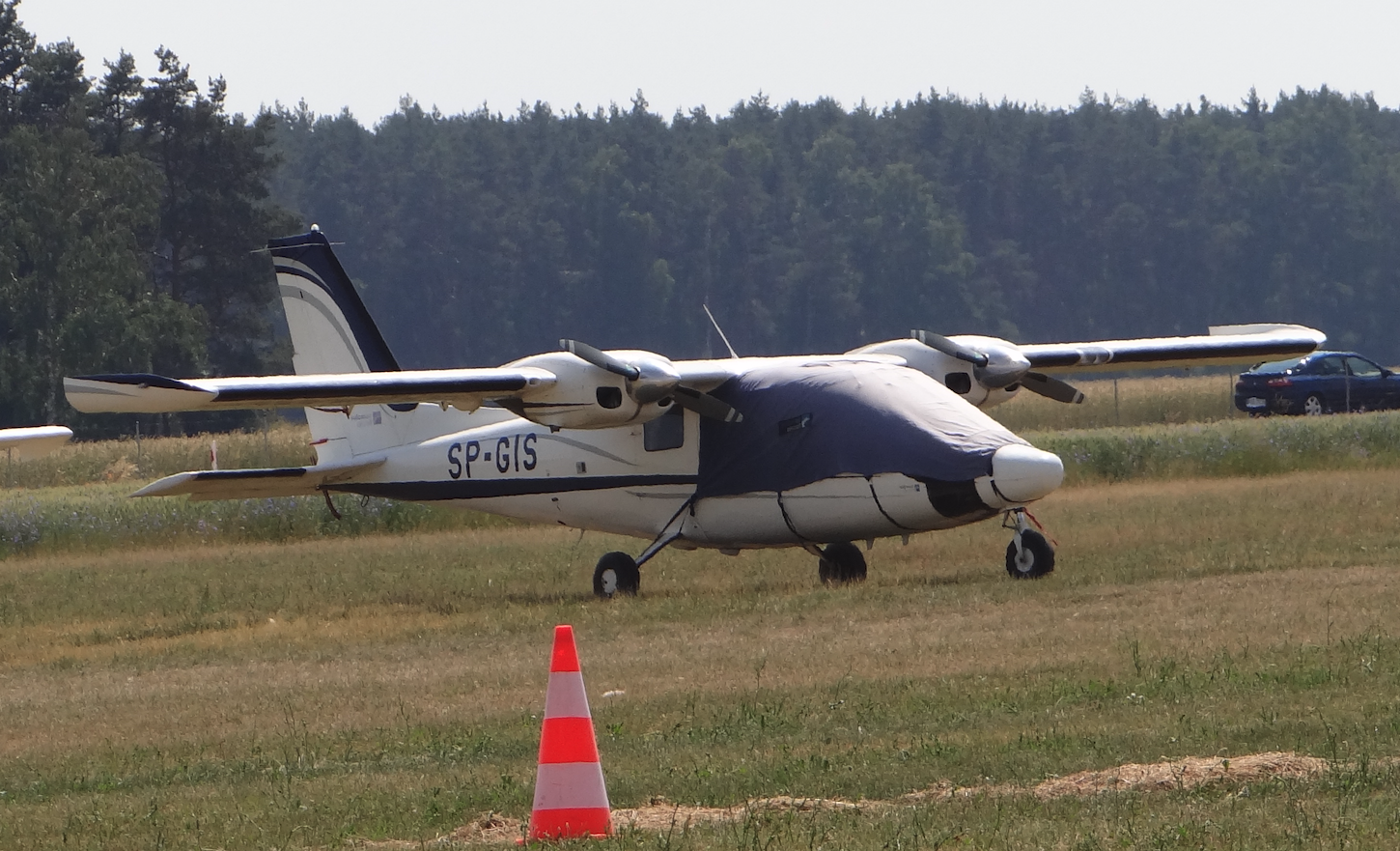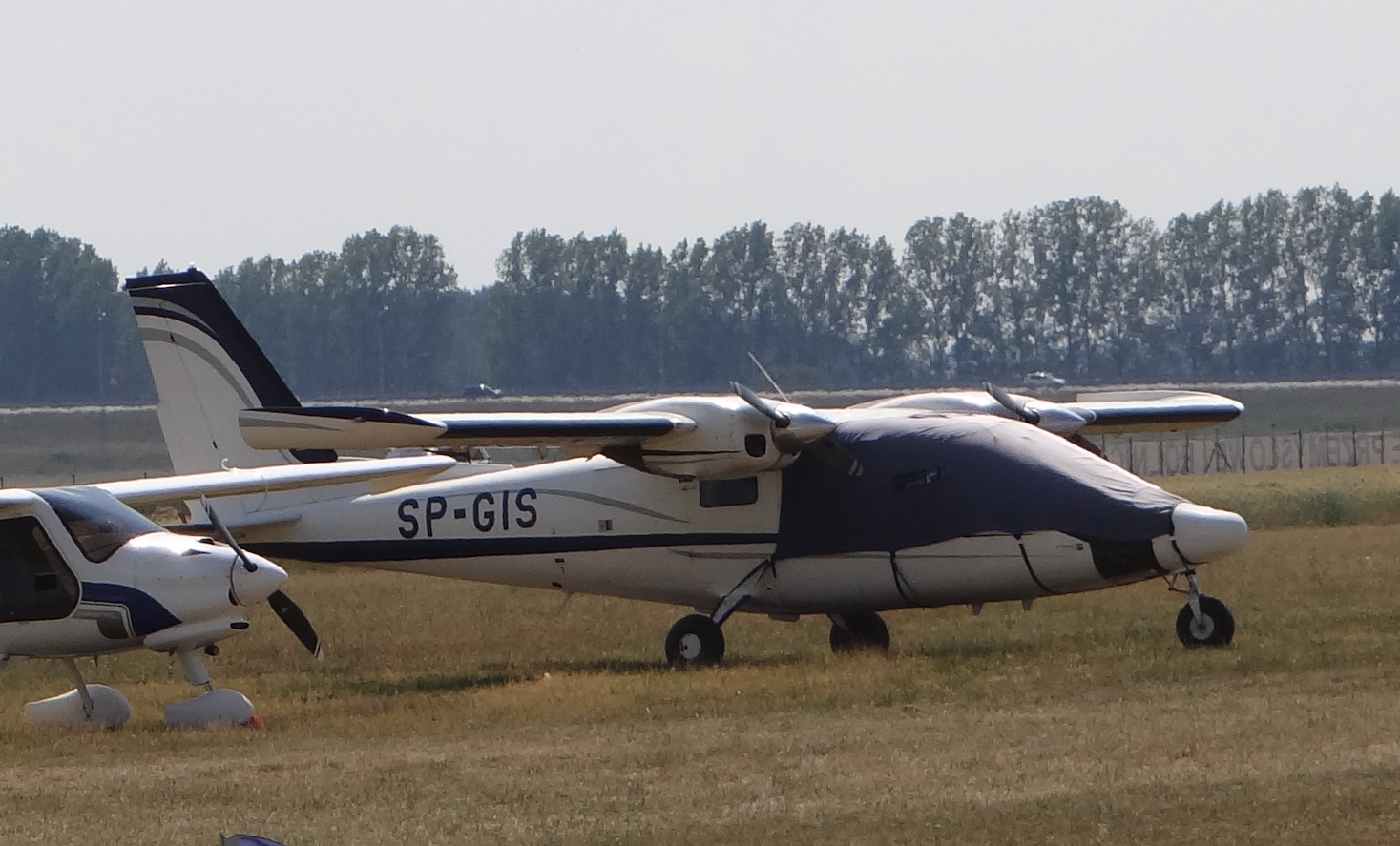Kraków 2021-11-15
Partenavia P.68, Vulcanair P.68. 2021 year.


Partenavia P.68, currently Vulcanair P.68, is a light passenger and transport aircraft. The plane was designed by the Italian constructor Luigi Pascale. Initially, it was produced by the Italian company Partenavia. The plane made its first flight on May 25, 1970, in Naples, and received the type certificate on November 17, 1971. The certificate mentioned an MTOW of 1,860 kg (4,100 lb). The Italian certificate was confirmed by the FAA certificate on December 7, 1971. Production started at new plants in Casoria, Italy.
In the course of production, in 1973, the fuselage of the aircraft was extended, which allowed it to take 10-11 people on board. The enlarged airframe allowed the use of turboprop engines.
In 1998, the production rights were transferred to Vulcanair.
The original plane took six people on board. The plane is a high-wing aircraft. The plane is propelled by two piston engines in a flat configuration placed in front of the leading edge of the wings. The tasks of transporting passengers and light goods are provided for the aircraft.
By 2020, 431 units had been built. The planes went into private hands as light aircraft, to flying clubs, as training planes. The planes entered military and state service in seven countries, including the US and the UK.
Partenavia P68 TC Observer in Poland.
On September 22, 2010, Gispro received the Partenavia P68 TC Observer in Naples. The plane received the SP-GIS identification marks and was entered into the Polish Register of Civil Aircraft. Thus, the machine received an airworthiness certificate in Poland. Gispro pilots made a test flight in Naples. The P68 SP-GIS plane has been equipped with devices from the Gispro Photogrammetric Platform, which includes the most modern sensors in the field of laser scanning, registration of aerial photos and aerial thermal imaging.
Construction P68.
The plane is completely metal. The plane is built in the classic layout. Wings in the high-wing configuration, with a trapezoidal outline.
The airplane is delivered with a fuselage of 9.43 m (30.94 ft) long P.68 Observer, 9.15 m (30.02 ft) long P.68TC Observer, 9.54 m (31.30 ft) long P.68 "Observer 2 , and versions with turboprop engines with a fuselage length of 10.89 - 11.27 m (35.73 - 36.97 ft) long AP68TP-600 "Viator".
Classic tail with division into rudders and fins.
The plane uses a fixed landing gear with a front wheel. The shaves act as shock absorbers. Many cars received wheels covered with fairings.
As standard, the drive consists of two Lycoming IO-360 engines, with a power of 2 x 200 HP (2 x 149 kW). The motors move two-blade metal propellers that have a variable pitch. In 1980, the plane was equipped with Lycoming TIO-360-C1A6D turbocharged engines, with a capacity of 2 x 210 hp (2 x 157 kW).
Data T-T P68:
The aircraft crew consists of one pilot. You can take five passengers on board. Span 39 ft 4 in (12 m). Length 31 ft 0 in (9.55 m). Height 12 ft 3 in (3.40 m). Aircraft weight 3,130 lb (1,420 kg). Maximum take-off weight 4,594 lb (2,084 kg). The amount of fuel 670 liters. Maximum speed of 160 kn (187 mph, 301 km / h). Range 1.103 nm (1.269 mi, 2,043 km). 18,000 ft (5,490 m) operating ceiling. Rate of climb 1,100 ft / min (6.0 m / s).
Written by Karol Placha Hetman
